Tomboys and Totems
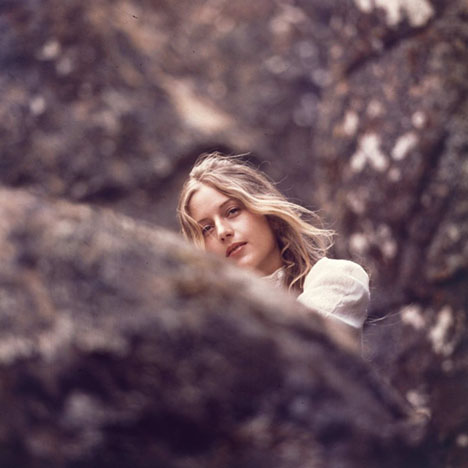
“…a mystery without a solution, a horror story without savagery, a nightmare in which all the watches stop at noonday…”
The Bestial Gardens of Men
Then they will say to the mountains, “Fall on us!”
and to the hills, “Cover us!”
(Luke 23:30)
The following lines by Edgar Allan Poe, slightly reshaped, are the first spoken words in the classic Australian film, Peter Weir’s Picnic At Hanging Rock:
What we see
and what we seem
are but a dream…
a dream within a dream.
Based on a novel by the enigmatic Joan Lindsay, the film is an experience that clings to you, not merely because it is so carefully and beautifully made, but also because it is a film with secret blades: it is a mystery without a solution, a horror story without savagery, a nightmare in which all the watches stop at noonday.
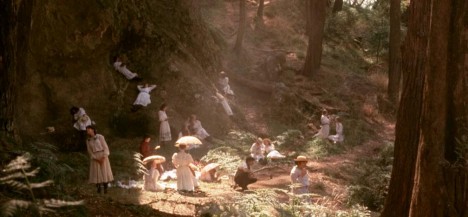
On Saturday 14th February 1900, a party of schoolgirls from Appleyard College picnicked at Hanging Rock near Mount Macedon in the state of Victoria. During the afternoon several members of the party disappeared without trace…
The picnic takes place on St Valentine’s Day. Although named for a saint, the date is a licence for the expression of natural impulses, the heart of paganism. Along with the use of “pipes of pan” in the film soundtrack, the culture of the schoolgirls is a scrapbook of Victorian fertility symbols. Yet, these passionate obsessions and an awakening sexual desire are strictly bound by the corset of Victorian religion. In one scene, recitation of a personal ode to St Valentine is censored for the sake of the memorization of the curricular Casabianca. Like first century Israel, Victoriana is indeed not one but two women, the bride and the harlot.
The golden icon is a blessed sylph named Miranda, likened to “the Botticelli angel” by one of her teachers. Both her appearance and her disappearance become elements in a sort of sacrificial ascension. Time stops and her potential is suddenly a flower pressed in a vice of tragedy. The end of her childhood is the birth of Venus. Though her purity is gone from the world, the memory of its fragrance fills the imaginations of those left behind, just as the mystery of the missing women corrupts, terrorizes and curses them, one by one.
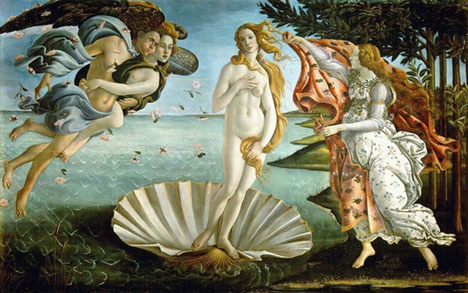
This dichotomy between nature and nurture is echoed in the quiet but unsettling tension between conflicting cultures and landscapes. The contrast of the rough Australian stablehand with the young English gentleman is humorous but telling. They do not lock horns but become friends—and possible suspects.
There is real discord, however, between the imported English culture and the dangerous and unforgiving Australian landscape into which its literature, dress and architecture have been confidently transplanted, entirely unadapted. Appleyard College is a manmade Eden, a temple and a greenhouse with boundaries clearly defined, its lush lawns giving way abruptly to brown fields. Moreover, the building in real life, Martindale Hall, was itself a deliberate reconstruction of the English home of the owner’s wife for the purpose of luring her to Australia. She never came, and he eventually lost the property in a gambling debt.
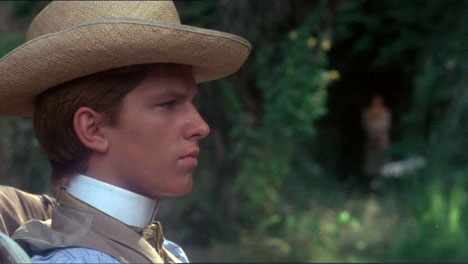
Visually, the picnic is also a hopeful transplant. It is a European painting, an English pastoral, carefully recreated in a foreign land. Moreover, the nature versus nurture theme is found even in the disparate “beauty and terror” approaches to the rock itself: the primeval eruptions described ominously by Miss McCraw and the Renaissance esthetic of Mademoiselle de Poitiers are both represented within the party of the missing. Victoria Bladen writes:
The juxtaposition of rational empiricism and emotive response, evident during the carriage ride, is continued with the girls’ proposed ascent of the Rock. For Miranda and Irma it is curiosity; they “wanted a closer view of the Rock” (p.33). By comparison, Marion Quade’s reason for wanting to go for a walk is to “make a few measurements at the base of the Rock”; she produces “some squared paper and a ruler” (p.25) yet it is not clear how such measuring would be done. In any event, no measurements are taken and the girls’ walk quickly takes on the quality of a mystic pilgrimage. Marion discards her pencil and notebook, “toss[ing] them into the ferns” (p. 38), before they fall asleep at the Rock.
While the natural space is a source of admiration and wonder, it is only superficially and temporarily idyllic, not the nurturing landscape of Virgilian pastoral. The girls become immersed in the landscape to a point where they are no longer in control but become subject to its magnetic, subsuming and devouring forces. The tragedy of Picnic is that the pastoral immersion in nature is taken to its extremity; the landscape takes and swallows up the heart of the human group.11 Victoria Bladen, “The Rock and the Void: Pastoral and Loss in Joan Lindsay’s Picnic at Hanging Rock and Peter Weir’s Film Adaptation,” in Colloquy, Issue 23, Monash University.
Director Peter Weir gives the rock a brooding life of its own. The brutish, volcanic monolith with its totem-pole profiles, indigenous almost-faces, hangs over the idyllic scene, then tears and devours. Have the women been snatched from paradise and swallowed by an ancient hell? Or have they instead been rescued, released from the unnatural constraints—such as the timekeeping—of high culture by the eternal noon of a timeless land?
Marion: Whatever can those people be doing down there, like a lot of ants? A surprising number of human beings are without purpose. Though it is probable they are performing some function unknown to themselves.
Miranda: Everything begins and ends at exactly the right time and place.
Joan Lindsay’s novel was published in 1967. After the story came to her in dreams, she wrote the book in a matter of weeks. She was asked repeatedly if the story were true and repeatedly hedged the question. It seems much of it was based on her own experience in a girls’ college. Lindsay also refused to reveal the solution to the mystery. However, the original manuscript did have an ending, left out on advice from her publisher and not released until 1987. In this final chapter, the reader discovers the fate of the missing women, yet all it does is present a further enigma. The Aboriginal Dreamtime comes to the fore, with transformations into animal totems, falling rocks and the freezing of time, including, surprisingly, the mathematics and science teacher, Miss McCraw. It is beyond weird.
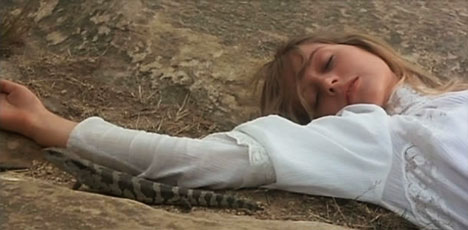
Many lovers of the book reject the final chapter as a fake, or at least as an ugly and unnecessary appendage to the ethereal beauty of this particularly strange and, for many years, “never-ending” story. Yet the reader is indeed given hints of the ending in the earlier chapters.2Chapter 3 shows signs of slightly clumsy editing once the contents of Chapter 18 are taken into account. See the commentary by Yvonne Rousseau published along with the missing chapter as The Secret of Hanging Rock.
This analysis is an excuse to recommend today (St Valentine’s Day, 2014), a stunning Australian film, but also to illustrate a point about the book of Revelation. The attitude of most Christians towards our own enigmatic “final chapter” resembles that of the headmistress of Appleyard College towards the Rock.
Good morning, girls.
Good morning, Mrs. Appleyard.
Well, young ladies, we are indeed fortunate in the weather for our picnic to Hanging Rock. I have instructed Mademoiselle that as the day is likely to be warm, you may remove your gloves once the drag has passed through Woodend.
You will partake of luncheon at the picnic grounds near the rock. Once again let me remind you that the rock is extremely dangerous, and you are therefore forbidden any tomboy foolishness in the matter of exploration, even on the lower slopes. I also wish to remind you, the vicinity is renowned for its venomous snakes and poisonous ants of various species. It is, however, a geological marvel on which you will be required to write a brief essay on Monday morning.
That is all. Have a pleasant day, and try to behave yourselves in a manner to bring credit to the college.
The Revelation of Jesus Christ is not a book intended to be observed but experienced, over and over. It is designed to resonate. It is offensive to the cultured sensibilities which shield us because it is supposed to transcend them, to speak not only to us but through us. Many of those who have given themselves to it wholeheartedly are seldom seen again. They are devoured. They become alien. They speak a new language, the “madness” of the prophets whose eyes see the chariots of God (2 Kings 6:17).
Although it appears to be a hostile and foreign landscape filled with confronting symbols, animal totems, virginal sacrifices clad in pure white, chosen, slain and ascending with a disturbing sexual undercurrent, the Revelation is in fact the authentic end of the story, a denouement of the natural world. The seed, flesh and skin of Genesis is everywhere in the Revelation, employed to express the bestial nature and hidden nakedness of institutions masquerading as gods and goddesses. The primeval world of Adam, a barren landscape of widows and orphans, is not a Dreamtime but a history. Ridiculed, ignored and neglected, it waits silently until the sixth hour, when time shall be no more. The fruits of culture are ripe, and it bites and devours, consumes and transfigures. Revelation is Genesis at full throttle, a bottle to be consumed and be consumed by, a fruit once forbidden but now freely offered. It is a book which removes inhibitions and exposes the hidden intents of the heart. The gardens of men are theft and nakedness, their lands are murder, and their cities are exile. The pungent, Dreamtime symbols are the hidden reality. The grotesque totems are a tangible exposure of “what we see and what we seem.”
Yet, as with the controversial Chapter 18 of Picnic At Hanging Rock, the Revelation contains nothing that is not contained either explicitly or implicitly in the earlier parts of the story. It simply describes the natural world condemned in Romans 1 and 2 in a different language, one which is impossible to explain or contain within the Victorian corset of Western Christianity. As John Taylor writes in his introduction to Chapter 18 in The Secret of Hanging Rock:
As anyone can see, the chapter is quite unfilmable. Film can only work with what God gives it, and God did not give it the same elasticity He granted the novel—though people keep trying, as the cutting-room floor shows.
It is little wonder that the “schoolgirls” of modern Bible colleges are constrained to the safety of the lower slopes by the prim widows of worldly academia.
This is a chapter from Sweet Counsel: Essays to Brighten the Eyes.
References
| 1. | ↑ | 1 Victoria Bladen, “The Rock and the Void: Pastoral and Loss in Joan Lindsay’s Picnic at Hanging Rock and Peter Weir’s Film Adaptation,” in Colloquy, Issue 23, Monash University. |
| 2. | ↑ | Chapter 3 shows signs of slightly clumsy editing once the contents of Chapter 18 are taken into account. See the commentary by Yvonne Rousseau published along with the missing chapter as The Secret of Hanging Rock. |


























February 15th, 2014 at 11:31 am
Mike, you are amazing. A true artist in your own right. Instead of paints and brushes, you use words and thoughts.
February 15th, 2014 at 12:00 pm
Thanks David – I’m pretty good with paints and brushes too. I think these are related skills, daubing and scribbling, like Cezanne and Zola (current reading). But these are tempered by major faults in all other areas. I was always the last to be chosen for a sports team and can be guaranteed to say the wrong thing in polite company.
February 15th, 2014 at 12:29 pm
Well I thought you were artistic even by the images you use (no idea where or how you find them) and even though I have not seen your art,if it is anything like your writing is must be very good!
Thanks for sharing your talents with the rest of us.
February 15th, 2014 at 11:04 pm
No – thank you for reading!